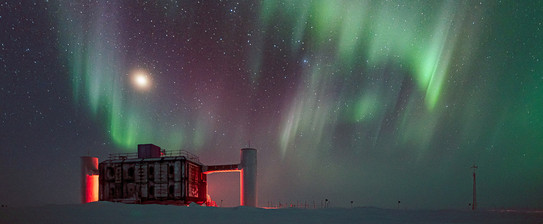Neutrino Astronomy
The IceCube neutrino observatory, which includes the IceCube in-ice array and the IceTop surface component, is the world's largest neutrino telescope. It is located in the harsh environment of the South Pole, and the in-ice detector consists of more than 5000 photon sensors frozen in Antarctic ice. The photosensors are mounted on 86 strings arranged in a triangular grid.Although the IceCube observatory is primarily designed to detect high-energy neutrinos from astrophysical sources, it is in fact a multipurpose detector that offers unique insight into the physics of neutrinos and muons.

The research within the IceCube collaboration therefore covers a broad spectrum of scientific topics, ranging from neutrino oscillations and atmospheric neutrinos at lower energies to astrophysical neutrino events of ultra-high energies.

![[Translate to English:] [Translate to English:]](/storages/app-physik/_processed_/3/a/csm_APPGroupphoto2023_001_small_858e4405eb.jpg)


